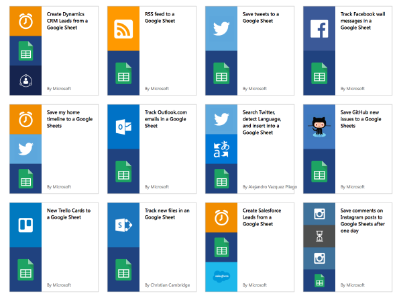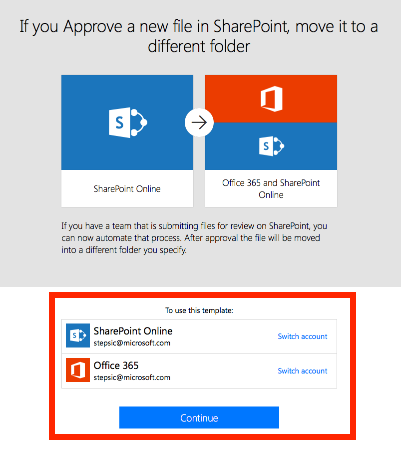More June Updates for Flow
The past two weeks we have released a few new features worth highlighting. As a quick recap, this month we have previously released:
- An iPhone app for monitoring your flows and receiving push notifications for interesting events. Go here to download the app and you can check out the templates available for push notifications here.
- Track the activity of your flows. A new notification center is available in the portal that shows you failures (such as when a connection is no longer working or a flow has failed), and the All activity page shows you everything that has happened (good or bad).
Google Sheets support
In the past, we have had both the ability to use Excel, as well as Google Drive, but this week we are adding native Google Sheets support. Check out all the templates here.

There are a few interesting types of scenarios I'd like to highlight as useful with Google Sheets (these all apply to Excel as well):
- Collect data from a service on the internet and save it into a sheet. One of the most popular examples of this is Twitter – so you can track tweets about your company. Another popular example is RSS to collect news articles.
- Create entries in your CRM from rows in a sheet. For example, you may get a list of sales leads in a sheet, and you want to quickly get those leads into your CRM system. With flow, you can easily get these leads moved from the sheet right into Salesforce or Dynamics.
- Use a sheet as a mailing list for sending our emails (or any other form of communication). This template will watch your Dropbox for a new newsletter, and when it's added get a list of email addresses from a sheet and send each person in that mailing list the newsletter.
Get started more quickly from templates
We have also made same optimizations to the way you can start from templates. Now, you can select what accounts you want to use for a template right inline on the template page:

Another improvement for using templates is single-sign-on. If you want to use SharePoint, Office 365, OneDrive for Business etc… (any service that uses Azure Active Directory), now you no longer have to enter your password the first time you connect – we will automatically pick up your sign-in information from how you connected to the Flow portal.
No expiring authorization for SharePoint and Office 365
Up until this week, for Azure Active Directory-based services (SharePoint, Yammer, Office 365 etc…), whenever you changed your password you would have to re-authorize Microsoft Flow to continue to have access. The most common reason this happened was most companies have policies that you need to update your password every ~60 days, and this would break your flows. Now, Microsoft Flow will automatically renew your access, so all of your flows will continue working across password changes. There are still scenarios where Microsoft Flow's authorization can expire (if you company changes certain auth policies), but it should be very rare going forward.


